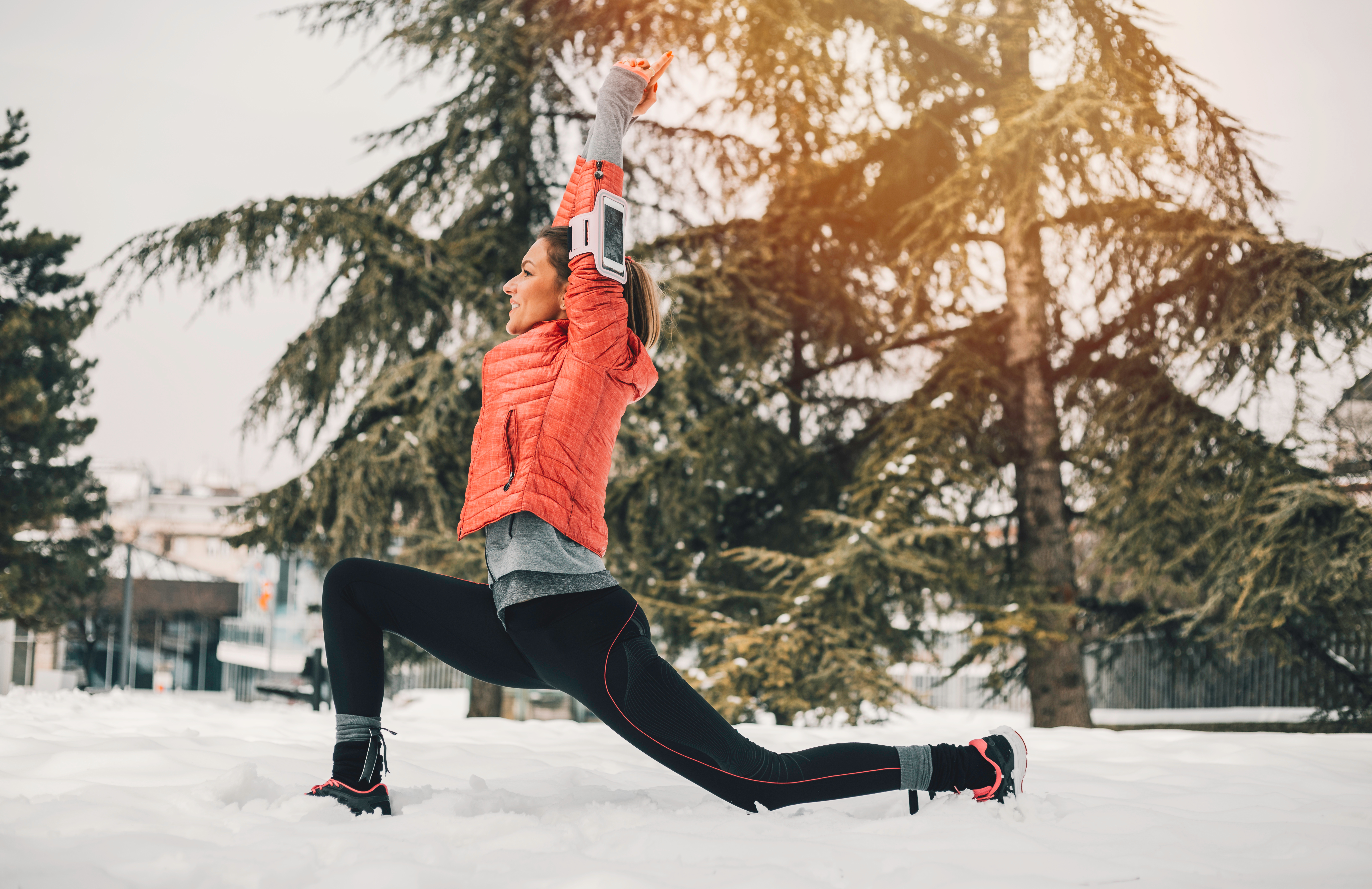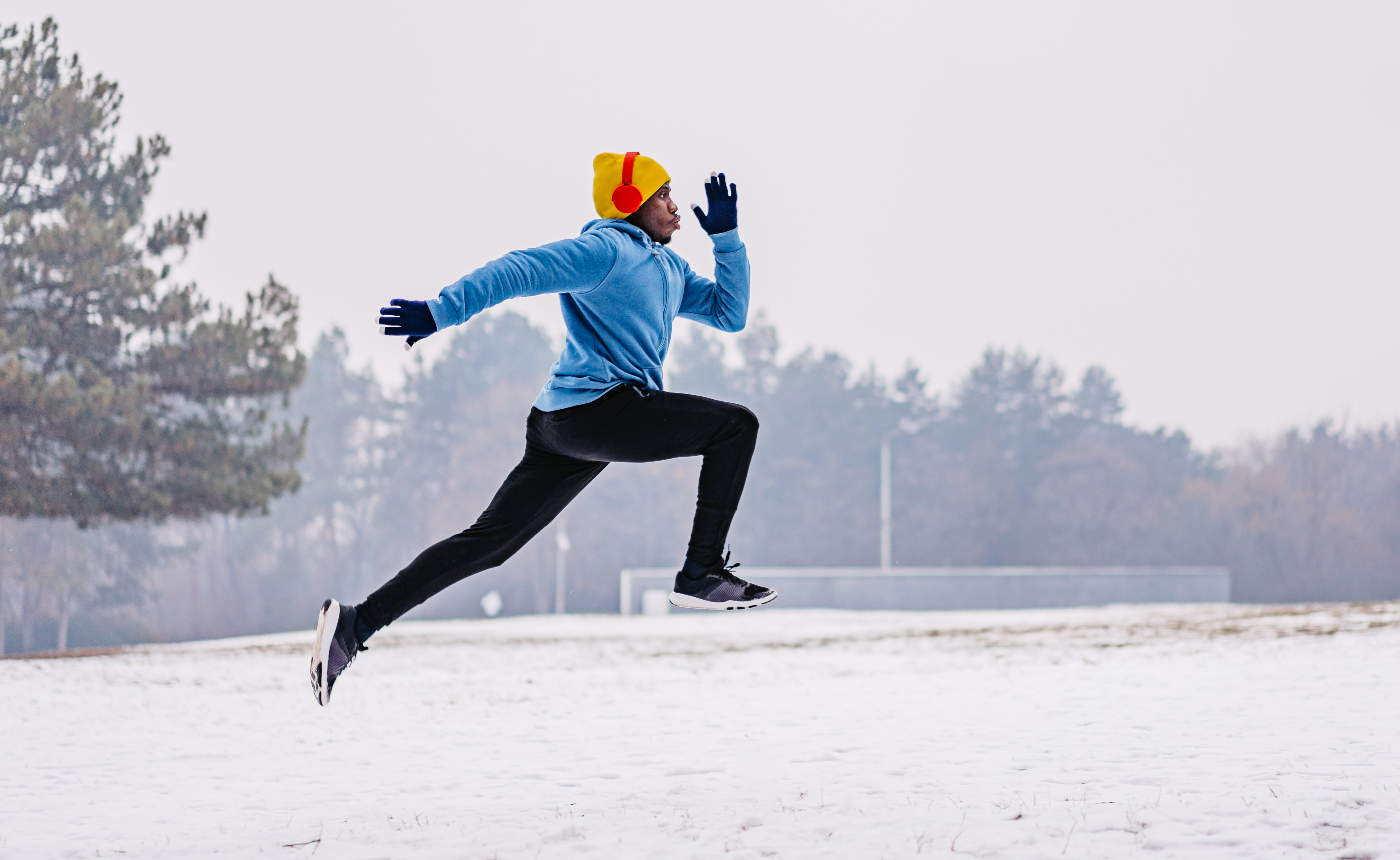7 ways I'm surviving winter marathon training

Anyone who has ever completed a marathon will know how physically demanding, time intensive and all-consuming the training can be. Throw in the darker days, freezing cold temperatures and often unpredictable weather conditions that winter brings and it’s a whole different ball game.
However, this isn’t to say you should hang up that pair of running shoes you just bought in the Black Friday sales and hold off until warmer weather to start training for your dream marathon event. You just need to find ways of working around the hurdles that winter brings to marathon training.
Admittedly, this is easier said than done. Having transitioned from training for a half marathon in the peak of summer to starting marathon training in the heart of winter, I understand the struggle of dealing with significantly fewer daylight hours and a home that feels so cold that the mere thought of leaving my bed feels like a marathon itself. Nevertheless, I've overcome the initial hurdles and found enjoyment in winter marathon training. Here's my survival guide...
7 ways I'm surviving winter marathon training
Plan, plan, plan
While the word 'plan' may not evoke images of festive fun, it certainly makes winter running more manageable. There are lots of things to consider when planning for winter running, but here are three things that are especially worth considering: weather, daylight hours and your social calendar.
For those following a training plan, checking the weekly weather forecast helps in scheduling each run. Unfavorable conditions like snowstorms or icy roads can make outdoor running impractical. If budget allows, owning one of the best treadmills provides a reliable and very convenient alternative. Or, I get on just fine zipping down to my local gym to get my miles in on a treadmill when the weather says no to a road run.
Daylight hours present a similar challenge. Everyone (including me) likes a good moan about how we leave for work when it’s dark and come home from work when it’s dark. Unfortunately, the hours of daylight that winter permits us are out of our control. So it's a good idea to save your long runs for the weekend so you aren’t trying to fit them in before or after work in total darkness. Or again, make the treadmill your friend. We also have a list of ways to stay safe while running in the dark with even more ideas.
Lastly, December is a time when our social calendars tend to stack up. There are work Christmas parties to attend, friendsmas celebrations to be had, family members to be visited, and between that, marathon training to be done. There is no festive fun in turning down plans, but making sure your marathon training is a priority should help you build the right balance. I know I am going to be traveling home for Christmas, so I have already texted my friend to say we are catching up over a long run together. That way I'm staying social and ticking off my training.
Get instant access to breaking news, the hottest reviews, great deals and helpful tips.
Dress appropriately
It’s an obvious one, but investing in winter running gear is absolutely worth the money. Shoving on random layers in your everyday wardrobe, such as an old hoodie, to keep you warm on your runs will only hold you back. It’s recommended that you dress like it is warmer than it actually is. This doesn’t mean you should head out in some shorts and the smallest sports bra you own, but just bear in mind before you layer up that you will warm up on your run. Be sure to look for sweat-wicking layers that have ventilation around areas that are more prone to sweating.

Let someone know you are going for a run
Ice and snow make it a lot easier to trip or fall on a run so it's important to let someone know when and where you are running.
I always carry my phone on my runs and allow close friends and family to track my live location. This means people can check if I get home okay or can find me if I do end up needing help. Plus, I can ring someone and ask for a ride home if the weather takes a turn.
Thankfully, there are various forms of running tech designed with safety in mind. For example, the running app Strava has a 'Beacon' feature, which when toggled on lets three contacts of your choice track you when you are recording a run. Similarly, Garmin watch wearers can send a LiveTrack link and GPS location to selected emergency contacts. Check out our guide to the best Garmin watches if you like the sound of this safety feature being on your wrist.
Make yourself visible
The days are darker in winter, and factors like snow and frost can reduce visibility. So, if you find yourself running when it's dark or misty, make yourself seen. Dress in bright, fluorescent, reflective gear, wear a head lamp, and set a flashlight on your watch – just ensure you are visible to cars, bikes, and other pedestrians. I wear a run vest lined with LED lights. While I might not feel like the most fashionable runner out there, I'd much rather be safe than sorry.
Do not skip warm ups
While warming up is a non-negotiable before any run no matter the season, I understand the temptation to skip a warm-up in winter. Stepping into the freezing air might make it feel like starting your run immediately is the quickest way to warm up.
However, investing 10-15 minutes in dynamic stretches and drill exercises can effectively raise your body temperature, allowing for a smoother transition into your run. If the cold is a deal-breaker for you, consider doing your warm-up indoors. Find some space to do exercises like high knees and hip openers before heading outside for your run.

Shower/Change clothes ASAP
Ever felt the shivers after returning home from a run? It’s not nice and it is especially nasty after a long run in the cold.
This is down to your body heating up while you run, and your skin's blood vessels widen to release heat and make you sweat, which then cools you down. After the run, your skin's blood vessels narrow again, reducing blood flow and sweat to bring your body temperature back to normal.
If you're at all sweaty after a run and it's cold outside, the combination of wet clothes and chilly air can make your body temperature drop fast. When you shiver, it's your body attempting to generate more body heat and prevent hypothermia. In simple terms, it's like your brain sending a message to your body saying, "Warm up, we're getting too cold," and shivering is one way your body responds to that message.
If I’m finishing a run near home, I jump straight into a warm shower. If you’re planning on grabbing brunch at the end of your run I’d recommend lining up a change of clothes if possible to stop the shivers settling in as you tuck into your avo and eggs on toast. Or if you drive to your run, bring a flask of hot chocolate or coffee to slurp on as you drive home.
Keep your eyes on the prize
Keep in mind the reason you embarked on your marathon training journey. In four to six months, as you approach the finish line, you'll be grateful for the time and effort you invested to reach this point. When I encounter challenges during a run, I try to visualize race day, serving as a reminder of why I'm running even in freezing temperatures on my weekend mornings at 9 AM.
There is research behind the power of visualization, with one study finding that Functional Imagery Training, a motivational technique that teaches individuals to create and practice vivid mental images involving all senses to enhance motivation and goal attainment, significantly increased the likelihood of non-runners completing an ultra-marathon (50km or more) compared to Motivational Interviewing.
Bottom line
If training for a marathon was easy then everyone you know would do it. Winter training will be hard at times, but there is also a lot to enjoy about it. There will be incredible views on your routes such as snow capped hills, breathtaking pink sunrises and the warmth of your favorite coffee shop after completing a tough training session.
But it's on you to plan ahead, prioritize your safety and don’t let yourself forget why you signed up for a marathon in the first place.
More from Tom's Guide
- I did the triangle pose every day for a week — here's what happened
- Forget Russian Twists — this 10-minute stability ball workout targets your abs and glutes
- Forget the gym — this resistance band routine uses 7 moves to strengthen and sculpt your glutes

Jessica has been a fitness writer at Tom’s Guide since 2023, bringing three years of experience writing about health, fitness, and the great outdoors. Her passion for exercise began during her childhood, where she spent weekends hiking and competing in local athletics club events. After earning a master’s degree in journalism from Cardiff University, Jessica found the perfect way to combine her love of storytelling and fitness into a career.
Jessica is passionate about testing fitness gear and tech, using her reviews to help readers make informed buying decisions. She ran her first marathon in April 2024, finishing it in 3 hours and 48 minutes. Through her training, she’s developed a deep understanding of what it takes to grow as a runner, from effective workouts and recovery techniques to selecting the right gear for every challenge.
When she’s not at her desk, Jessica enjoys spending time in the kitchen crafting new recipes, braving cold water swims and hiking.
